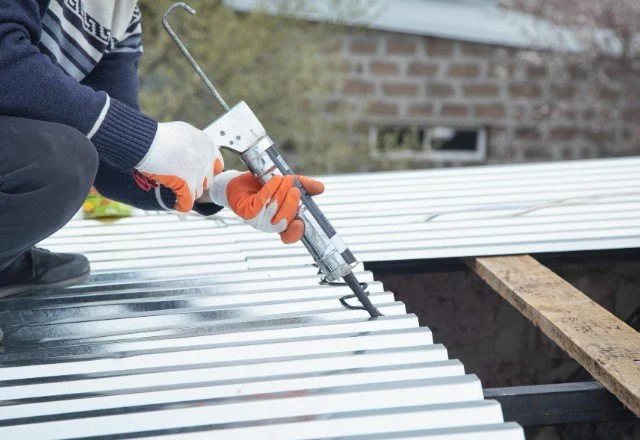
How to Seal Cracks Around Roofline
- 1 - #roofline-cracks-detection
- 2 - #why-sealing-matters
- 3 - #materials-and-preparation
- 4 - #step-by-step-sealing-process
- 5 - #common-mistakes-to-avoid
- 6 - #real-life-case-example
- 7 - #expert-tips-for-long-term-protection
Spotting cracks around the roofline is the first and most crucial step in preventing structural damage and pest intrusion. Many homeowners don’t realize how easily small openings along fascia boards, soffits, and trim can turn into major entry points for rodents, insects, and even water. The roofline is exposed to sun, wind, rain, and seasonal temperature changes, causing materials to expand and contract—eventually forming gaps. Learning how to properly inspect these areas helps you stay ahead of costly repairs.
Understanding Roofline Vulnerabilities
Rooflines often hide hairline cracks that you cannot see unless you perform a close inspection. Look for discoloration, wood rot, loose trim, or holes chewed by squirrels or birds. It’s also wise to check your attic ceiling for light leaks, which often signal exterior gaps. The more detailed your inspection is, the better your sealing results will be.
Sealing roofline cracks is more than just a cosmetic fix; it plays a vital role in home protection. Unsealed gaps allow insects like wasps and carpenter ants to nest inside, while warm attic spaces attract rodents seeking shelter. Moisture can seep in through cracks, leading to mold and structural decay. Proper sealing prevents all these issues and increases the longevity of your roofline’s materials.
How Pest Entry Happens Through Roofline Gaps
One overlooked fact is that rodents can squeeze through openings as small as a quarter of an inch. Insects require even less. That means even tiny cracks can eventually lead to major infestations. The moment pests detect warmth or airflow from small openings, they exploit the gap. Sealing your roofline properly eliminates these entry points before pests take advantage of them.
Choosing the right materials is essential for a long-lasting seal. Silicone-based caulk works best for exterior gaps because it withstands extreme weather and remains flexible over time. For larger cracks, expanding foam or exterior-grade sealant may be required. Before sealing, clean the area thoroughly by removing dirt, loose paint, or decayed material. A well-prepared surface ensures proper adhesion.
Preparing the Workspace
Safety should always come first. Use a stable ladder and inspect the ground to make sure it's even. Wearing protective gloves and eyewear is recommended when working with sealants. Once everything is ready, measure the crack size and determine which sealing material is best suited. Proper preparation speeds up the sealing process and ensures a professional finish.
The actual sealing of cracks around the roofline involves a series of deliberate steps. First, apply caulk or foam according to the size of the gap. Smooth the caulk with a gloved finger or caulking tool for an even finish. Let the sealant cure for the recommended time before painting or applying additional layers. This structured process provides long-term protection.
Detailed Sealing Method
For narrow cracks, a thin bead of caulk is usually enough. However, when the gap exceeds half an inch, using expanding foam gives better coverage. After applying foam, trim off any excess once it hardens. Follow up by coating the sealed area with exterior-grade paint to improve durability and blend the repair with surrounding materials.
Many homeowners rush through roofline repairs, resulting in ineffective sealing. A common mistake is applying sealant on dirty or moist surfaces, which prevents proper adhesion. Another issue is using the wrong type of caulk—indoor caulks will not withstand outdoor conditions and degrade quickly. Additionally, applying too thick a layer can cause cracking over time.
Why Proper Technique Matters
Sealing roofline cracks is not difficult, but technique matters. Even small errors can leave hidden pockets where pests can still enter. Taking the time to apply thin, smooth layers of sealant and inspecting the repair after it cures ensures the job is done correctly. This attention to detail helps you avoid repeat repairs.
A homeowner in Texas shared an online story about discovering a squirrel family living inside the attic. The entry point? A small crack along the roofline where two boards had slightly separated. After sealing the crack properly, the problem vanished. Stories like this highlight how important it is to handle roofline sealing proactively.
What This Case Teaches Us
This example shows how even minor roofline flaws can escalate into bigger issues. It’s not just about pest control—it’s also about protecting your home from weather damage. Sealing cracks early can save hundreds or even thousands of dollars in repairs.
For long-term protection, experts recommend performing seasonal roofline inspections—especially after storms or temperature swings. Using professional-grade sealants and replacing damaged wood when necessary helps maintain the integrity of your home’s exterior. If you’re unsure which materials to choose or how to approach a difficult crack, exploring guides and solutions available at PestControlHub can provide helpful recommendations and top-rated products.
Maintaining a Protected Roofline
Once sealed, keep an eye on the repaired areas at least twice a year. Environmental exposure will eventually wear down even the best sealants. Regular touch-ups ensure pests, moisture, and air leaks stay out. With proper care, your roofline can remain strong and well-protected for many years.

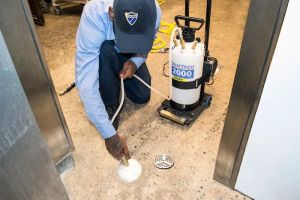
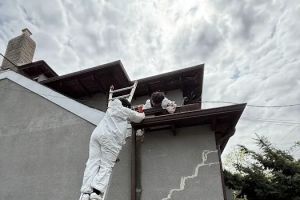

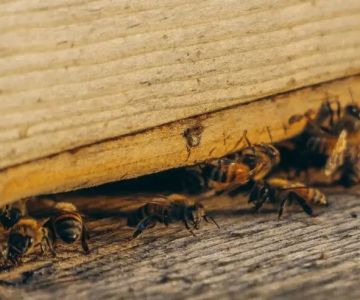
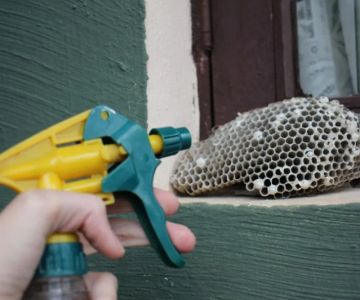



 Lawn Squad of Myrtle Beach4.0 (42 reviews)
Lawn Squad of Myrtle Beach4.0 (42 reviews) Western Pest Services1.0 (1 reviews)
Western Pest Services1.0 (1 reviews) American Pest Control4.0 (386 reviews)
American Pest Control4.0 (386 reviews) Orkin4.0 (1302 reviews)
Orkin4.0 (1302 reviews) Green Sphere - Lawn Care, Tree & Shrub Care, Tick, Mosquito & Perimeter Pest Control5.0 (230 reviews)
Green Sphere - Lawn Care, Tree & Shrub Care, Tick, Mosquito & Perimeter Pest Control5.0 (230 reviews) American Exterminating Systems4.0 (13 reviews)
American Exterminating Systems4.0 (13 reviews) How to Prevent Pest Return After Rain
How to Prevent Pest Return After Rain Safe Pest Control Around Food Storage Areas – Tips for Effective and Safe Solutions
Safe Pest Control Around Food Storage Areas – Tips for Effective and Safe Solutions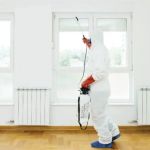 DIY vs Professional Pest Control: Which One Saves You Money?
DIY vs Professional Pest Control: Which One Saves You Money? How to Block Pest Entry Around Deck Joists: Effective Solutions
How to Block Pest Entry Around Deck Joists: Effective Solutions How to Use Non-Chemical Barriers for Pest Control: Natural Solutions for Your Home
How to Use Non-Chemical Barriers for Pest Control: Natural Solutions for Your Home How to Manage Pest Issues in Older Homes: Tips for Homeowners
How to Manage Pest Issues in Older Homes: Tips for Homeowners